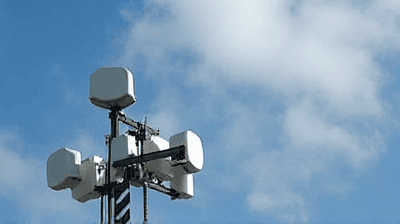
As climate change continues to affect our planet, the importance of local weather stations becomes increasingly clear. These stations play a crucial role in gathering and disseminating accurate weather data, fostering public awareness, and enhancing climate resilience within communities.
Local weather stations are facilities equipped to observe and record weather conditions in a specific area. They collect data on various meteorological variables, such as temperature, humidity, precipitation, wind speed, and atmospheric pressure. This information is crucial for understanding local weather patterns and can serve as a resource for both the public and decision-makers.
There are several types of weather stations, each serving different purposes:
Automated Weather Stations (AWS): These are technologically advanced stations that require minimal human intervention. They continuously monitor and transmit data in real time.
Manual Weather Stations: Operated by trained personnel, these stations often provide high-quality data but rely on regular observation and maintenance.
Community Weather Stations: Many communities establish their own weather stations to gather localized data. These stations are often managed by volunteers and provide valuable insights into microclimates.

Climate resilience refers to the ability of a community or ecosystem to withstand and adapt to the impacts of climate change. Local weather stations contribute to this resilience in several key ways:
In the face of extreme weather events, timely information is critical for effective response and recovery. Local weather stations monitor and report severe weather conditions, such as storms, floods, and heatwaves. This data allows communities to issue timely warnings, enabling residents to take appropriate precautions, such as evacuating or securing their property.
Accurate weather data is essential for disaster preparedness. Local weather stations help communities develop and implement emergency response plans. By analyzing historical weather patterns, communities can anticipate potential hazards and allocate resources more effectively. This proactive approach reduces vulnerability and enhances readiness for climate-related disasters.
Local weather stations provide valuable data that can inform land use planning and development decisions. Understanding local climate patterns allows planners to design infrastructure that can withstand extreme weather events. For example, knowing that a region is prone to flooding can lead to the establishment of proper drainage systems and zoning regulations to minimize risk.
Farmers rely heavily on accurate weather data to make informed decisions about planting, irrigation, and harvesting. Local weather stations provide real-time updates on conditions such as temperature and rainfall, helping farmers optimize their practices to increase yield and sustainability. This not only supports local economies but also enhances food security in an era of changing climate conditions.
By providing insights into local weather trends, weather stations can promote sustainable practices within communities. For example, they can help residents understand the best times for planting trees, conserving water, or implementing energy-saving measures. By raising awareness about the impacts of climate change on daily life, local weather stations encourage responsible environmental stewardship.
Local weather stations also play a vital role in raising public awareness about climate change and its impacts. Through education and outreach, these stations help communities understand the importance of weather data and climate resilience.
Many local weather stations collaborate with schools and educational institutions to develop programs that teach students about meteorology and climate science. These programs can inspire the next generation of scientists and environmentally conscious citizens. By making weather data accessible, stations foster a sense of curiosity and responsibility towards the environment.
Local weather stations often engage with the community through workshops, events, and social media. They provide platforms for discussions on weather-related issues, climate adaptation strategies, and sustainable practices. This engagement creates a sense of ownership and empowerment among community members, motivating them to take action in addressing climate challenges.
In the digital age, local weather stations leverage technology to disseminate information quickly and effectively. Many stations have mobile apps and websites where users can access real-time data, forecasts, and educational resources. Social media platforms are also utilized to reach a broader audience, making weather information accessible to all.
Local weather stations often partner with non-profits, government agencies, and other organizations to promote environmental awareness. These collaborations can amplify the impact of educational initiatives and reach underserved populations. By working together, these entities can address common climate challenges and prioritize community resilience.

To illustrate the impact of local weather stations on climate resilience and public awareness, we can examine a few notable case studies:
In a mid-sized city, a group of volunteers came together to establish a community weather station. This initiative aimed to provide residents with localized weather data and foster a greater understanding of the area's climate. They implemented educational programs in schools and organized community workshops focused on weather preparedness.
As a result, residents became more aware of the impact of extreme weather on their lives. The community weather station has since played a pivotal role during severe weather events, issuing timely alerts and information to residents, significantly enhancing the community's resilience.
In a rural area heavily dependent on agriculture, local weather stations have transformed farming practices. Farmers gained access to real-time weather data, enabling them to make informed decisions about irrigation, planting, and pest control.
The integration of local weather data with agricultural practices has led to increased crop yields and reduced water usage. The farmers reported a deeper understanding of how changing weather patterns affect their livelihoods, motivating them to adopt sustainable practices.
In a rapidly urbanizing city facing the urban heat island effect, local weather stations provided critical data on temperature fluctuations. By collaborating with local authorities, the station's data informed plans for increasing green spaces and implementing cooling measures in vulnerable neighborhoods.
This initiative not only addressed immediate heat-related concerns but also promoted long-term sustainability through urban planning. The community became more engaged in advocating for greener practices, demonstrating the power of local weather data in shaping policy and resilience efforts.
As technology continues to evolve, the potential of local weather stations to enhance climate resilience and public awareness will only grow. Some emerging trends include:
With the advent of low-cost, high-precision sensors, more communities can establish their own weather stations. This democratization of weather data will lead to an increase in localized climate information, enhancing community engagement and resilience.
Big data and advanced analytics are becoming integral to weather forecasting and climate modeling. Local weather stations can harness these technologies to provide deeper insights and predictive capabilities, empowering communities to take proactive measures against climate challenges.
Collaborations between local weather stations, universities, and governmental bodies will continue to foster public awareness and education. As stakeholders work together to address climate change, the role of local weather data in policy-making and community engagement will become even more pronounced.
As awareness of climate change grows, local weather stations will have an essential place in educating the public. Utilizing social media, online platforms, and community events, they will play a vital role in fostering a climate-conscious society.

Local weather stations are invaluable assets for enhancing climate resilience and promoting public awareness. By providing timely information, supporting disaster preparedness, and engaging communities in meaningful ways, these stations foster a culture of climate consciousness and proactive action.
To build a sustainable future, it is essential to invest in local weather stations and encourage public participation. Together, we can develop resilient communities capable of thriving amid the challenges posed by climate change.